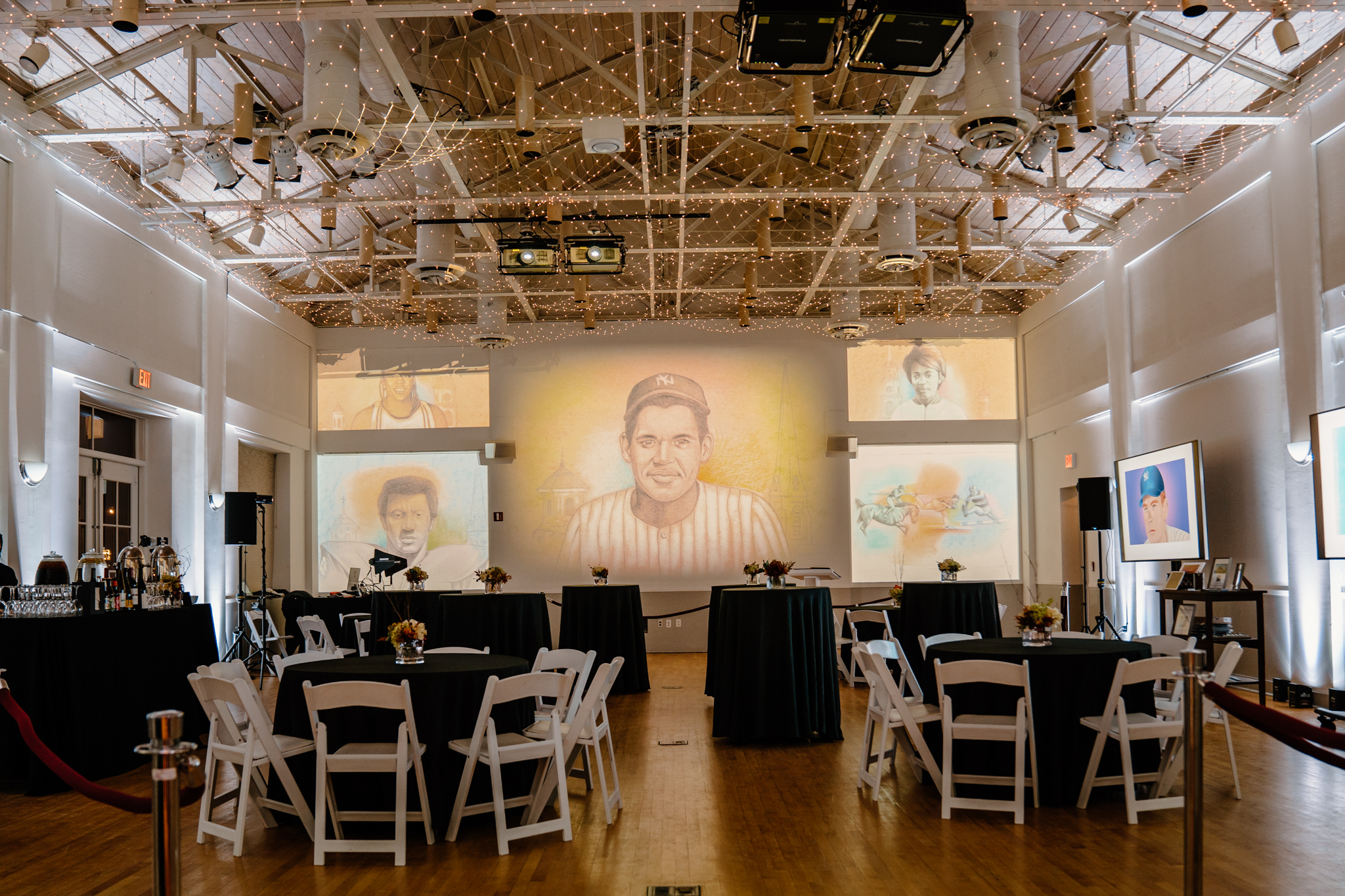FREDERICK, MD – How do you turn sketch art into an immersive experience? You cover the entire wall in it! The Showtime team, led by Galen Newell, stepped up to this challenge on the evening of November 16, 2021 at the Delaplaine Center for the Arts, surrounding event guests with the artwork of a sports mural that does not yet exist.
The Frederick Sports Mural, a project of Community Arts Inc & TGP Gives, is set to be one of the world’s largest sports murals. It will be located at Harry Grove Stadium in the heart of Frederick, Maryland. The muralwill celebrate 125 years of history in more than 30 sports and will recognize 5 coaches and 250 athletes. Visionary and artist Yemi Fagbohun, founder of Community Arts, Inc., created the mural concept seven years ago. Since then, he has worked with an architect, structural engineer and a construction firm, plus the City of Frederick to be able to locate the 550-foot-long and 14-foot-tall public art project along the exterior wall of the stadium. “I thought I would paint a dozen or more portraits, but when we started to research, we found hundreds of athletes who have been recognized for high levels of achievement in their respective sports,” Fagbohun said. While all of the athletes attended Frederick County schools, they also have gone on to achieve fame through the Olympics, including one in Tokyo in 2021, and several professional sports.
Artist Yemi, stands with a rendering of the Frederick Sports Mural
Helping bring this art concept to life for the local community was Showtime Sound LLC’s own Galen Newell. The TGP Gives team had worked with Showtime Sound in the past on a very successful drive-in movie and concert series. Their partnership created the perfect transition for this new endeavor. Community Arts Inc. & TGP Gives tasked Showtime with building a living art gallery showing the mural sketches. Newell and his team utilized laser projection technology to display artist Yemi’s drawings throughout the room.
Showtime took several steps to prepare for an event this unique. Newell described the process, saying, “Because of the size and aspect ratios of the walls that were being used as living canvases, we brought out our gear to do a test run several days prior to the event. This helped to finalize throw distance, lens selection, and projector placement. During this test run, we decided on how we were going to ‘slice’ each wall into sections in order to display multiple works on the same wall at the same time. We found that the walls seemed to naturally divide themselves into 5-6 different canvases, so we asked for at least 8 pieces of art in order to be able to dynamically cycle through the works during the show.”


 Download our FREE Event Planner Checklist. Take on your next event like a pro!
Download our FREE Event Planner Checklist. Take on your next event like a pro!